Hawaii is often envisioned as a luxury escape filled with resorts and high price tags. While that side of Hawaii certainly exists, there is a vibrant, adventurous, and surprisingly accessible side waiting for backpackers. Imagine dramatic volcanic landscapes, lush rainforests, iconic surf breaks, and a rich, living culture, all explored without breaking the bank. This guide is your key to unlocking the magic of Backpacking Hawaii on a budget, showing you how to experience this island paradise through authentic experiences, stunning nature, and cultural immersion. Forget the gilded cages of resorts; true Hawaiian adventure awaits those willing to explore.
Why embark on Backpacking Hawaii? The reasons are as numerous as the waves crashing on its shores. Beyond the obvious allure of sun-drenched beaches and vibrant coral reefs, Hawaii offers a unique blend of geology, ecology, and indigenous culture found nowhere else on Earth. From steaming volcanoes and alpine deserts to dense jungles and rugged coastlines, the natural diversity is staggering. For those seeking active travel, rich history, unique cultural encounters, and incredible natural beauty without the typical tourist crowds and costs, Backpacking Hawaii presents an unparalleled opportunity. It’s the chance to connect deeply with the land and the spirit of Aloha.
Where to Go Backpacking in Hawaii
The Hawaiian archipelago stretches across a vast expanse of the Pacific, encompassing hundreds of islands. Among these, eight are considered the main islands. For backpackers, four stand out as the most popular and accessible, each offering a distinct flavor of the islands: Kauai, Oahu, Maui, and Hawaii Island (commonly known as the Big Island).
Choosing where to go depends on your interests. Kauai, the “Garden Isle,” is a haven for nature lovers and hikers. Oahu balances city life and world-class surfing. Maui offers the legendary Road to Hana and the towering Haleakala volcano. The Big Island is a land of raw volcanic power and incredible natural diversity. While covering all in one short trip is challenging due to inter-island flight costs, focusing on one or two islands allows for a deeper, more rewarding Backpacking Hawaii experience.
Best Travel Itineraries for Backpacking Hawaii
Crafting the perfect Backpacking Hawaii itinerary involves balancing popular sights with off-the-beaten-path gems, while keeping budget and travel time in mind. Inter-island travel takes time and money, so dedicating sufficient time to each island you visit is key. Here are a few itinerary ideas, customizable to your interests and pace.
For a shorter trip, like 10 days, immersing yourself in a single island offers the most fulfilling experience. Trying to hop between islands too quickly can lead to rushed travel and missed opportunities. These itineraries are designed to give you a solid taste of what each island offers.
Backpacking Hawaii 10 Day Itinerary #1: Kauai Highlights
Kauai, known as the Garden Isle, is perfect for backpackers who prioritize stunning natural beauty and outdoor adventures. A 10-day trip allows you to explore both the rugged north and the scenic west.
Start your journey in Lihue and explore the Coconut Coast. Head north towards the rural North Shore, stopping at Kilauea Point National Wildlife Refuge for birdwatching and coastal views. Take time to enjoy the relaxed atmosphere of Kapaa and its cafes.
Spend a few days exploring the North Shore’s famous beaches like Kee Beach (great for snorkeling) and Makua (Tunnels) Beach. Hanalei Bay is a hub for watersports, while Anini Beach offers calmer waters. Inland, visit Opaekaa Falls and Wailua River State Park.
Dedicated time must be set aside for Kauai’s true gems: the Napali Coast and Waimea Canyon. Base yourself in the Hanalei area or a nearby budget spot. Hike into Waimea Canyon, often called the “Grand Canyon of the Pacific,” for breathtaking views. Tackle a portion of the legendary Kalalau Trail along the Napali Coast for dramatic cliffs and secluded beaches.
Backpacking Hawaii 10 Day Itinerary #2: Maui’s Hidden Gems
Maui is often associated with luxury resorts, but the Valley Isle holds countless hidden spots perfect for budget-conscious backpackers. Focus on adventure and natural beauty away from the main tourist hubs.
Fun Things to Do in Kissimmee Florida
Where To Go In Waikiki – Your Ultimate Guide to Hawaii’s Iconic Beachfront
The Best Things to Do in Naples – Your Ultimate Italian Experience
Begin by exploring the West Maui coastline, finding quieter spots near Napili and Kapalua if driving or hitchhiking. Make time for Haleakala National Park. An early morning or late afternoon trip to the summit of Mount Haleakala (over 10,000 feet) offers unforgettable sunrise or sunset views over the crater.
The drive to Hana is a highlight. Take your time on this scenic road, stopping at waterfalls, swimming holes, and coastal viewpoints. Ho’okipa Beach Park is famous for surfing and sea turtles. The town of Hana itself offers a glimpse into authentic Hawaiian life and serves as a base for exploring the stunning natural attractions along the eastern coast.
Explore Waiʻanapanapa State Park with its black sand beach and sea caves. Venture further to Red Sand Beach and Kaihalulu Beach. The Seven Sacred Pools (part of Haleakala National Park) and the bamboo forest near Hana are must-sees. While Maui can be pricey, focusing on free natural attractions and utilizing budget accommodation strategies makes Backpacking Hawaii here feasible.
Hawaii 14 Day Itinerary #3: Oahu Surf Culture, Beaches, and Highlights
Oahu is Hawaii’s most populated island, home to the capital Honolulu and the famous Waikiki Beach. While it has urban areas, Oahu also boasts incredible natural beauty and is the epicenter of Hawaiian surf culture, particularly on the North Shore.
Start with a brief stay in Honolulu to visit the Pearl Harbor Memorial and hike Diamond Head for city views. However, the real pull for many backpackers is the North Shore. Head directly there, basing yourself in or near the town of Haleiwa, the self-proclaimed “Surfing Capital of the World.”
The North Shore offers endless activities. Explore the lush Waimea Valley with its botanical gardens and waterfall. Spend days hopping between famous surf breaks like Sunset Beach, Waimea Bay (home to the legendary Eddie Aikau big wave competition), and the Banzai Pipeline. Even if you don’t surf, watching the pros tackle massive waves in winter is an incredible spectacle.
Discover quieter spots like Kawela Bay or snorkel at Shark’s Reef. On the western side of the island, hike from Keawaʻula Beach to Kaena Point for rugged coastal scenery. Oahu offers a vibrant mix of culture, history, and outdoor adventure, easily filling two weeks of Backpacking Hawaii explorations.
Hawaii 14 Day Itinerary #4: The Big Island
The Big Island, officially named Hawaii, is the largest and youngest island, constantly being shaped by volcanic activity. Its sheer size and diverse landscapes require at least two weeks to explore properly.
The absolute highlight is Hawaii Volcanoes National Park, home to the active Kilauea and Mauna Loa volcanoes. While access can change due to eruptions, exploring lava fields, steam vents, and volcanic landscapes is a unique experience. Check current conditions before visiting.
Experience the contrast between the wet, lush Hilo side and the dry, sunny Kona side. Stay a few days in Hilo to explore Wailuku River State Park and Rainbow Falls, and check out the vibrant farmers market. Kona is known for its coffee plantations, snorkeling (especially night dives with manta rays), and a more tourist-oriented vibe.
Explore the rugged Hamakua Coast north of Hilo, with stunning waterfalls like Akaka Falls. Venture to the Puna Coast for black sand beaches and unique volcanic features. Don’t miss the southernmost point of the island, Ka Lea, and the rare green sand beach at Papakolea. A major undertaking for adventurous backpackers is hiking to the summit of Mauna Kea. At over 13,800 feet (and over 33,000 feet from the sea floor), it offers incredible views but requires careful planning for altitude.
Hawaii Travel Guide: Island Breakdowns
Each island in Hawaii offers a unique adventure for backpackers. Understanding their distinct characteristics helps in planning your Backpacking Hawaii journey.
The cost of travel is a significant factor. Hawaii is part of the United States, meaning prices for goods and services are generally higher than in many typical backpacking destinations. However, smart strategies, like focusing on free outdoor activities, cooking your own food, and utilizing budget accommodation, can significantly reduce costs.
While inter-island flights are the primary way to travel between islands, they add expense. For short trips, focusing on one island is often more budget-friendly and allows for deeper exploration. Long-term travelers with more time and flexible budgets can certainly island-hop.
Places to Visit in Kauai
Kauai truly earns its nickname “Garden Isle.” It’s less developed than Oahu or Maui, attracting those seeking natural beauty and a laid-back atmosphere. The slow pace of life and abundant outdoor activities make it a favorite for Backpacking Hawaii.
Backpacking the Napali Coast
The Napali Coast is the crown jewel of Kauai and a must-see for any backpacker. Towering emerald cliffs drop dramatically into the Pacific, carved by wind and rain into impossibly beautiful shapes.
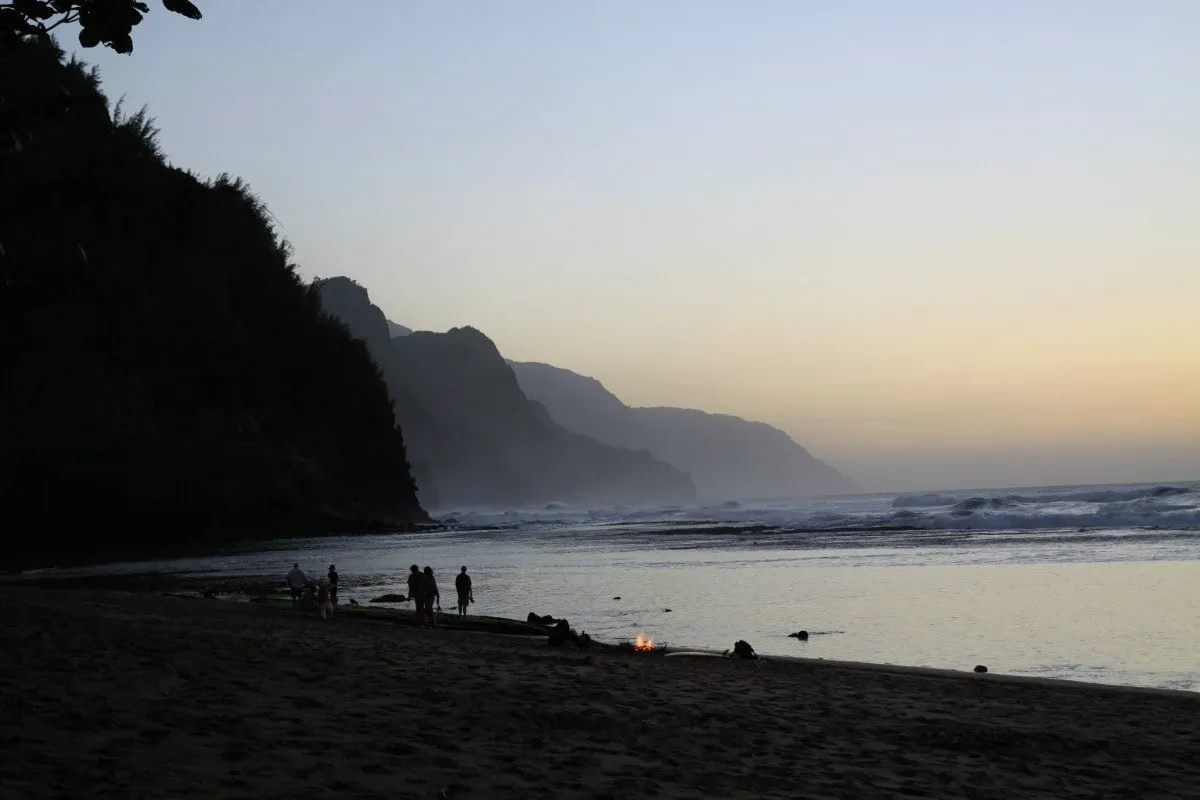 Backpacking Hawaii along the stunning Napali Coast in Kauai.
Backpacking Hawaii along the stunning Napali Coast in Kauai.
The best way to experience its grandeur is by hiking the challenging Kalalau Trail, a 22-mile roundtrip journey. Even hiking just the first two miles to Hanakapi’ai Beach offers incredible views. Permits are required for hiking beyond Hanakapi’ai Valley and for camping at Hanakoa or Kalalau. The ruggedness means you need to be prepared, but the rewards are unparalleled views of this iconic coastline.
Backpacking Waimea Canyon
Another geological marvel on Kauai is Waimea Canyon. Often called the “Grand Canyon of the Pacific,” this vast canyon stretches over ten miles long and is over 3,000 feet deep in places.
 Hiking through the rugged, green landscape of Waimea Canyon in Kauai.
Hiking through the rugged, green landscape of Waimea Canyon in Kauai.
While viewpoints from the road offer impressive vistas, exploring Waimea Canyon on foot provides a richer experience. Numerous hiking trails wind through the canyon, from short walks to longer, more challenging treks down to the canyon floor and the Waimea River. Trails like the Canyon Trail to Waipo’o Falls or the Kukui Trail offer varying levels of difficulty and stunning scenery, showcasing the canyon’s colorful rock layers and lush vegetation.
Backpacking Hanalei
Located on Kauai’s North Shore, Hanalei is a charming, picturesque town situated on a beautiful crescent-shaped bay. It’s a popular base for exploring the northern part of the island and embodies a relaxed, bohemian surf culture vibe.
 Panoramic view of the green mountains surrounding Hanalei Bay in Kauai.
Panoramic view of the green mountains surrounding Hanalei Bay in Kauai.
Hanalei Bay is great for surfing, swimming, and boating, depending on conditions. The iconic Hanalei Pier is a perfect spot for fishing or watching the sunset. Nearby, the Hanalei National Wildlife Refuge offers opportunities for kayaking through peaceful waterways. The town itself has a selection of shops, galleries, and eateries, making it a comfortable and scenic spot during your Backpacking Hawaii adventure.
Backpacking Mount Waialeale
Mount Waialeale is one of the wettest spots on Earth and the geological heart of Kauai. Its base, known as the “Blue Hole,” is surrounded by sheer cliffs covered in countless waterfalls, aptly named the “Weeping Wall.”
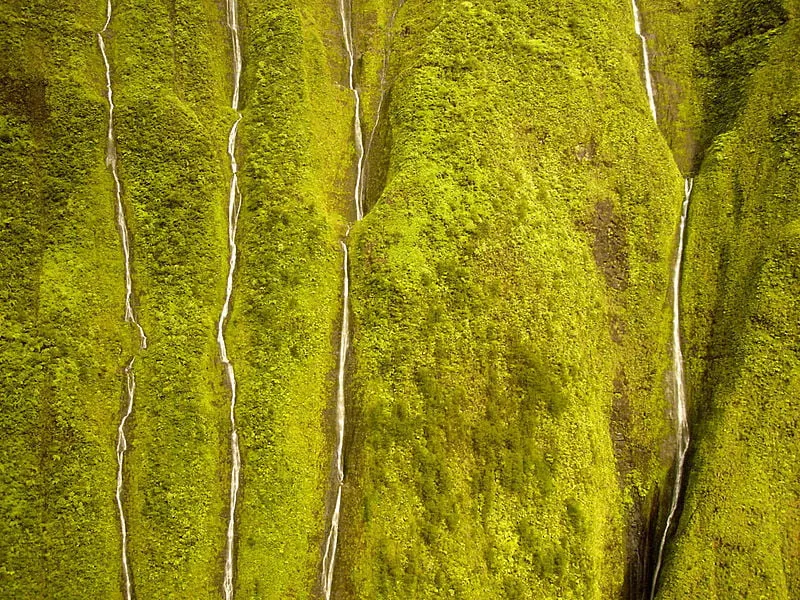 The dramatic ‘Weeping Wall’ waterfall cascading down a cliff face on Mount Waialeale, Kauai.
The dramatic ‘Weeping Wall’ waterfall cascading down a cliff face on Mount Waialeale, Kauai.
The hike to the Blue Hole and the Waialeale headwaters is an extremely challenging trek, suitable only for experienced hikers with proper gear. Flash floods are a serious risk due to the constant rain. However, for those prepared for the mud, river crossings, and rugged terrain, reaching the Weeping Wall offers a breathtaking, almost otherworldly experience of raw, untamed nature. It’s the epitome of an adventurous Backpacking Hawaii challenge.
Places to Visit in Maui
Maui, the Valley Isle, strikes a balance between popular tourist destinations and incredible natural landscapes. While some areas cater to luxury travel, the island offers extensive opportunities for hiking, exploring coastal wonders, and experiencing diverse ecosystems, making it a worthwhile stop for Backpacking Hawaii.
Backpacking Haleakala National Park
Dominating the eastern side of Maui is Mount Haleakala, a massive dormant volcano and the centerpiece of Haleakala National Park. Hiking to the summit, over 10,000 feet high, offers panoramic views, especially mesmerizing at sunrise or sunset.
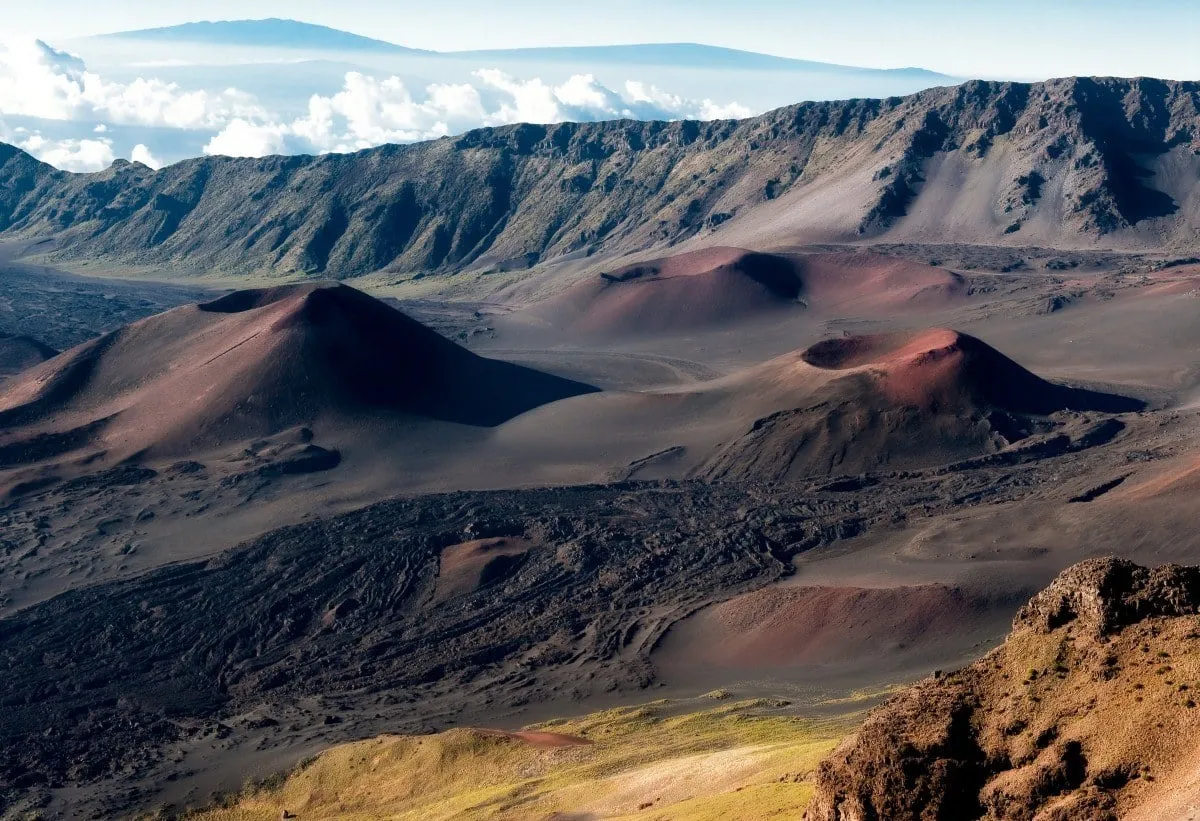 The stark, Mars-like landscape within the Haleakala crater on Maui.
The stark, Mars-like landscape within the Haleakala crater on Maui.
The park extends beyond the summit, encompassing diverse ecosystems. Within the crater, trails cross barren, colorful landscapes that resemble Mars. On the Kipahulu side near the coast, the park protects lush rainforests, waterfalls (like the Seven Sacred Pools), and a section of the famous Road to Hana. Haleakala offers hiking opportunities ranging from short walks to multi-day treks, providing a dramatic contrast to Hawaii’s typical beach imagery and a highlight for Backpacking Hawaii.
Ho’okipa Beach
Located on Maui’s North Shore, Ho’okipa Beach is a world-renowned spot, particularly famous in the windsurfing and surfing communities. Its powerful waves attract skilled riders, especially during the winter months.
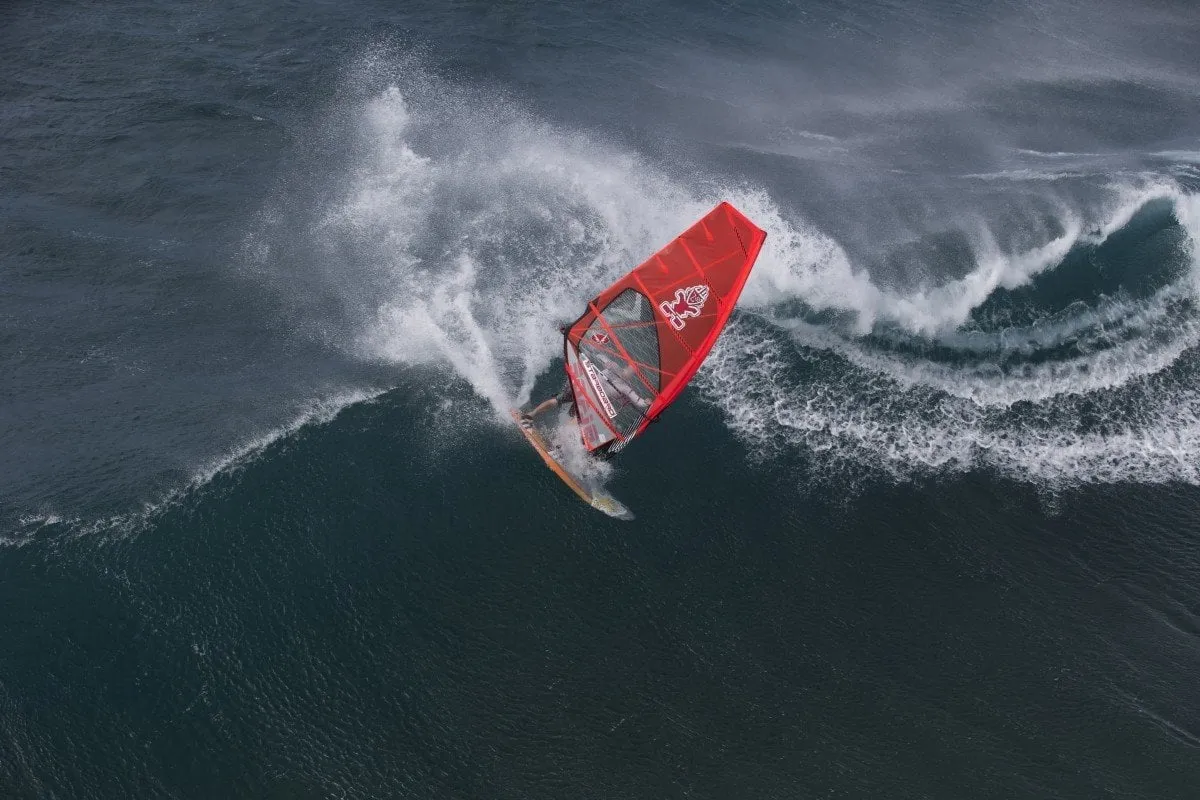 Windsurfers riding large waves off the coast of Ho’okipa Beach in Maui.
Windsurfers riding large waves off the coast of Ho’okipa Beach in Maui.
Even if you don’t surf, Ho’okipa is worth a visit to watch the impressive skills of the windsurfers and surfers. The beach is also a frequent resting spot for Hawaiian green sea turtles, often seen basking on the sand in the late afternoon. It’s a vibrant, lively beach scene that offers a taste of Maui’s active water sports culture during your Backpacking Hawaii journey.
Backpacking the Road to Hana
The Road to Hana is a legendary scenic drive along Maui’s eastern coast, connecting Kahului to the remote town of Hana. It’s not about the destination, but the journey itself, winding through lush rainforest, past cascading waterfalls, and along dramatic coastal cliffs.
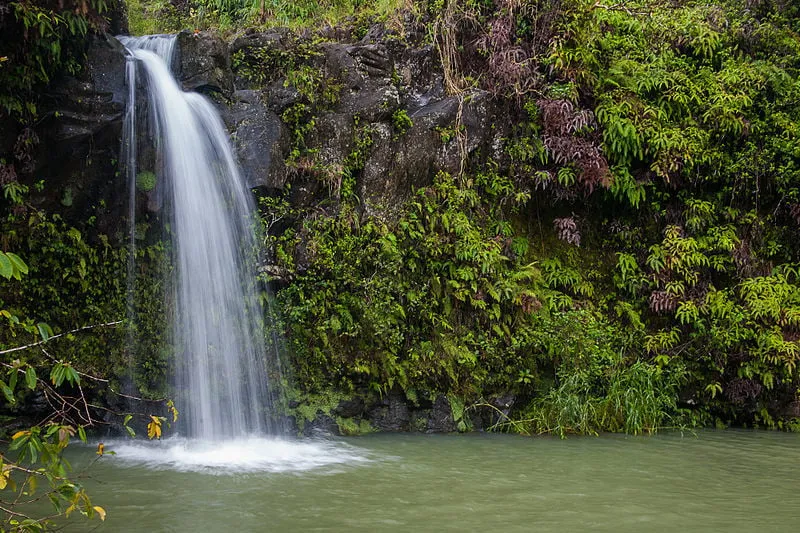 A waterfall cascades down rocks next to the scenic road to Hana in Maui.
A waterfall cascades down rocks next to the scenic road to Hana in Maui.
With over 600 curves and 50 bridges, the Road to Hana encourages a slow pace. Numerous pull-offs lead to incredible natural attractions: hidden waterfalls (like Twin Falls or Wailua Falls), refreshing swimming holes, scenic overlooks, and botanical gardens. Popular stops include Waianapanapa State Park (Black Sand Beach) and the Seven Sacred Pools (part of Haleakala National Park). Taking your time, packing a picnic, and being flexible are key to enjoying this iconic stretch of Backpacking Hawaii adventure.
Backpacking Hana
The town of Hana itself is a small, quiet community, serving as a peaceful endpoint or base after navigating the famous road. While the town is less of a draw than the journey or the surrounding nature, it offers a glimpse into a more traditional Hawaiian lifestyle.
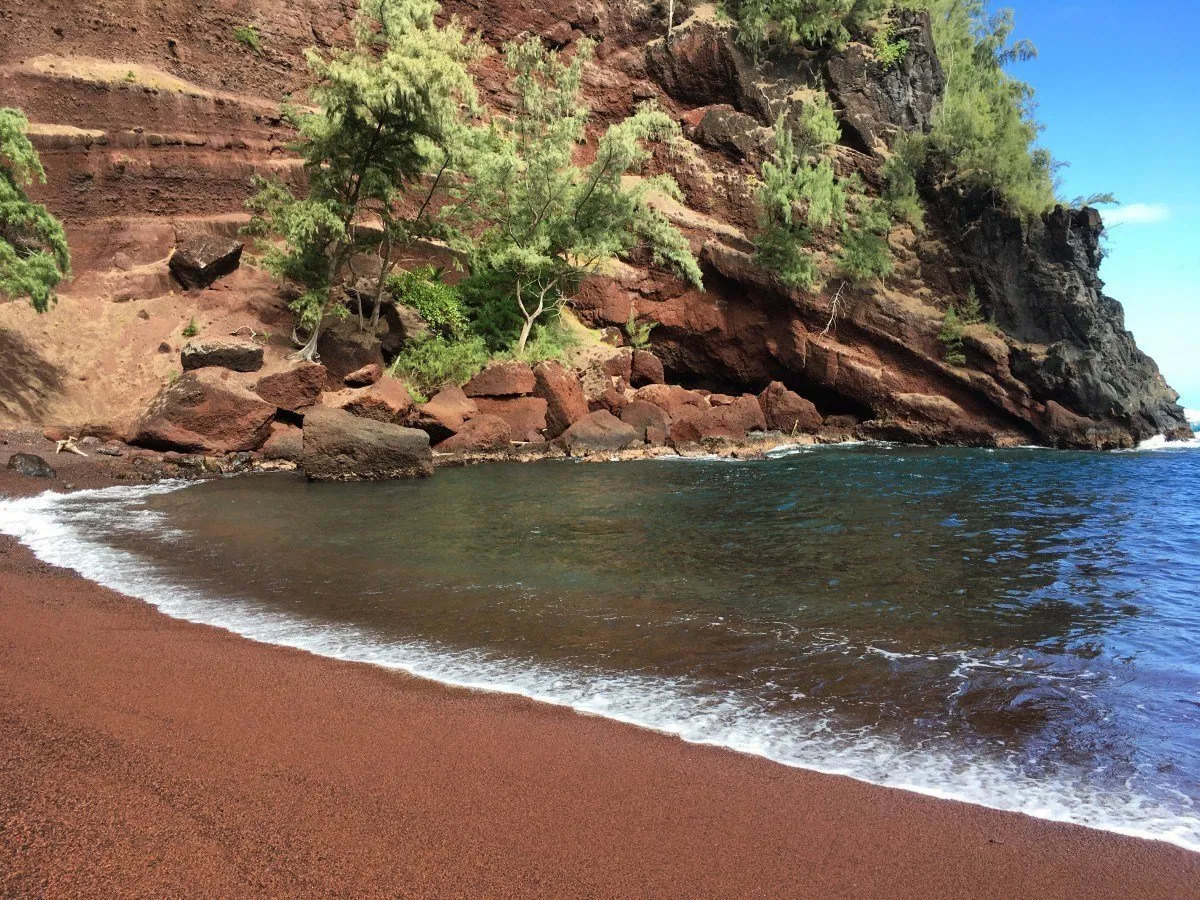 Red sand beach with steep cliffs in Maui, Hawaii.
Red sand beach with steep cliffs in Maui, Hawaii.
Staying in Hana allows you to explore the area’s attractions without rushing. Nearby Hamoa Beach is consistently ranked among Hawaii’s best. Exploring unique geological sites like the Hana Lava Tube is also an option. Most appealing are the secluded beaches and coastal hikes in the vicinity, including the striking Kaihalulu Beach (Red Sand Beach). Hana provides a quiet escape and convenient access to some of Maui’s most stunning natural beauty for backpackers.
Places to Visit in Oahu
Oahu is Hawaii’s most urbanized island, home to the capital city of Honolulu and the famous Waikiki. However, beyond the city sprawl, Oahu offers incredible surfing on the North Shore, lush mountain valleys, and significant historical sites, making it a diverse destination for Backpacking Hawaii.
Backpacking Honolulu
Honolulu is the bustling capital of Hawaii and the main entry point for many visitors. While it can feel like a typical city, it offers historical sites, museums, and easy access to famous landmarks.
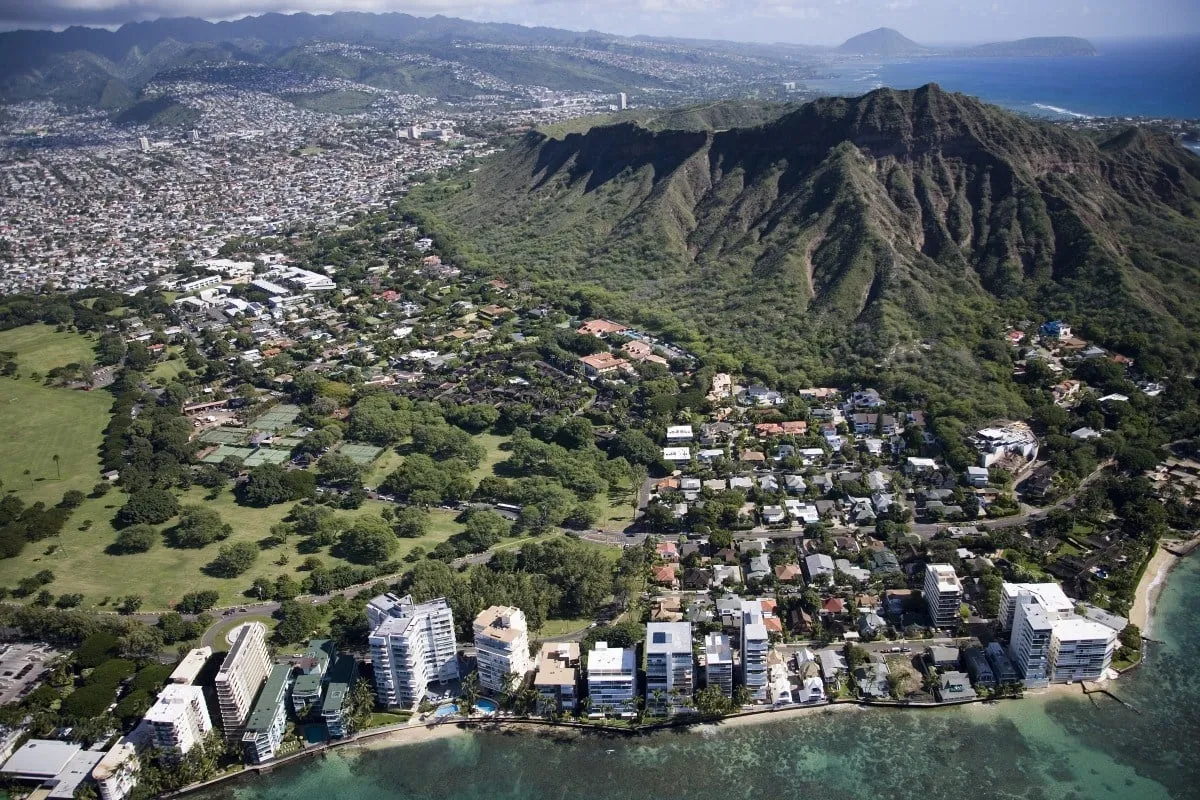 Aerial view of Waikiki Beach and Honolulu city with Diamond Head in the background.
Aerial view of Waikiki Beach and Honolulu city with Diamond Head in the background.
Waikiki Beach is the most famous spot, popular for swimming, sunbathing, and learning to surf in its gentle waves. For history buffs, the World War II Valor in the Pacific Memorial at Pearl Harbor is a poignant and important site. Hiking the steep trail up to the summit of Diamond Head crater provides rewarding panoramic views of Waikiki and the coastline. For a taste of nature within the city, the Lyon Arboretum showcases a vast collection of tropical plants. While urban, Honolulu serves as a necessary hub and offers specific points of interest during your Backpacking Hawaii journey.
Backpacking Haleiwa
Located on Oahu’s legendary North Shore, Haleiwa is a charming surf town that serves as the heart of the island’s surfing culture. It retains a laid-back, slightly bohemian atmosphere, drawing surfers, artists, and travelers seeking the authentic North Shore vibe.
 A surfer riding a wave in the ocean off the coast of Haleiwa, Oahu.
A surfer riding a wave in the ocean off the coast of Haleiwa, Oahu.
Haleiwa is the perfect base for exploring the famous surf breaks along the North Shore, such as Waimea Bay, Sunset Beach, and the Banzai Pipeline. Even when the waves aren’t massive, the beaches are beautiful. The town offers a variety of food trucks (including famous shrimp trucks), local shops, and galleries like the Wyland Galleries, showcasing marine-themed art. It’s a mandatory stop for anyone wanting to immerse themselves in Hawaii’s iconic surf scene while Backpacking Hawaii.
Backpacking the Waimea Valley
Just a short drive from Haleiwa on the North Shore is the lush and historically significant Waimea Valley. This protected area offers a different kind of natural beauty than the coast, featuring botanical gardens, cultural sites, and a famous waterfall.
 A powerful waterfall surrounded by lush green vegetation in Waimea Valley, Oahu.
A powerful waterfall surrounded by lush green vegetation in Waimea Valley, Oahu.
Waimea Valley is home to extensive botanical collections and archaeological sites that reveal its importance to Native Hawaiians for centuries. A paved path leads through the valley to the impressive Waimea Falls, where swimming is often permitted (check conditions). The valley provides a wonderful opportunity for easy walks or more challenging hikes into the surrounding hills, offering a peaceful escape into Oahu’s tropical interior during your Backpacking Hawaii explorations.
Backpacking Waimea Bay
Waimea Bay is one of the most famous big-wave surf spots in the world, located on Oahu’s North Shore. While its waves are terrifyingly large in winter, in the calmer summer months, it transforms into a beautiful, tranquil bay.
In winter, Waimea Bay is home to “The Eddie Aikau Big Wave Invitational,” a prestigious surf contest held only when the waves reach a massive minimum height. Witnessing “The Eddie” is a truly awe-inspiring spectacle of human skill and courage against the power of nature.
 The view looking out from Waimea Bay in Oahu, with waves and coastline visible.
The view looking out from Waimea Bay in Oahu, with waves and coastline visible.
In summer, the bay is popular for swimming, snorkeling, and jumping from “Da Rock,” a large rock formation on the beach. Whether you’re seeking massive waves or calm waters, Waimea Bay is an iconic spot that represents the heart of Oahu’s surf identity and a key location for Backpacking Hawaii.
Places to Visit on The Big Island
Hawaii Island, or the Big Island, is characterized by dramatic geological contrasts created by its active volcanoes. It’s the youngest island and home to everything from black sand beaches and lava fields to lush rainforests and snow-capped mountains, offering incredibly diverse experiences for Backpacking Hawaii.
Backpacking Hawaii Volcanoes National Park
Hawaii Volcanoes National Park is a landscape of raw, dynamic power. It encompasses the summits of two of the world’s most active volcanoes, Kilauea and Mauna Loa. Exploring this park is a unique opportunity to witness ongoing geological processes shaping the Earth.
 Flowing lava glowing red at night in Hawaii Volcanoes National Park.
Flowing lava glowing red at night in Hawaii Volcanoes National Park.
The park offers numerous trails and viewpoints to see steaming vents, volcanic craters, and lava flows (depending on current activity). Iconic features include the Kilauea caldera, the Thurston Lava Tube, and scenic drives like the Chain of Craters Road (when open). While volcanic activity can cause closures, the sheer scale and power of the landscape make it a highlight of Backpacking Hawaii on the Big Island and one of the most impressive national parks in the United States.
Backpacking Hilo
Located on the lush, rainy eastern side of the Big Island, Hilo is a charming town with a more local feel than the tourist-focused Kona side. It serves as a great base for exploring the nearby natural attractions and experiencing authentic island life.
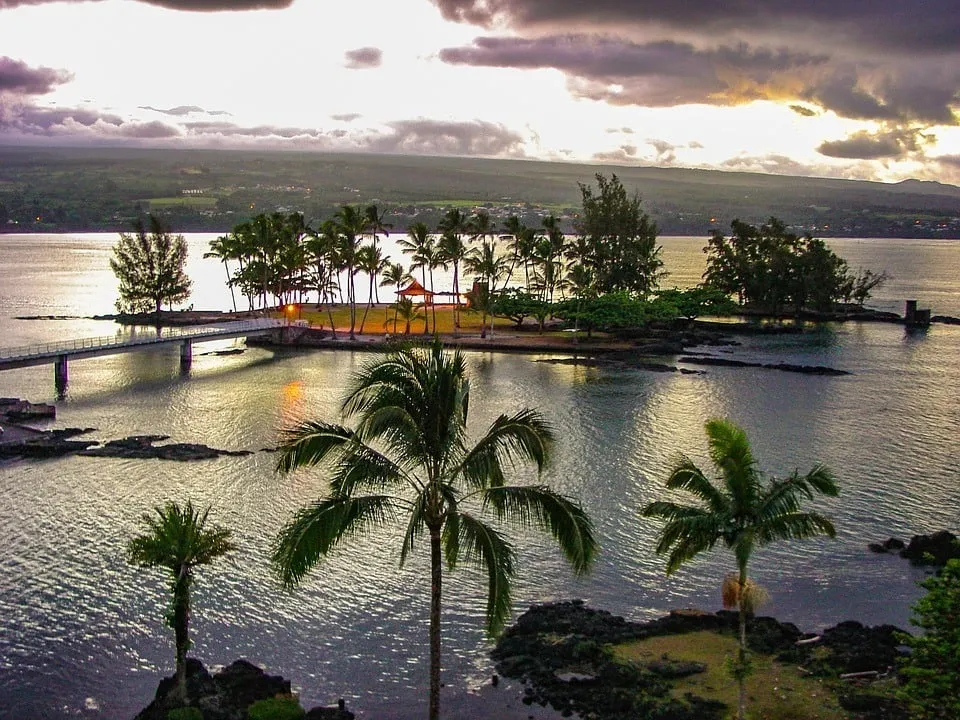 A coconut with a face drawn on it, representing the laid-back vibe of Hilo, Hawaii.
A coconut with a face drawn on it, representing the laid-back vibe of Hilo, Hawaii.
Hilo is known for its historic downtown, vibrant farmers market (perfect for stocking up on fresh produce), and proximity to beautiful waterfalls like Rainbow Falls and Akaka Falls. The Wailuku River State Park offers scenic views and swimming holes. Hilo provides a taste of local culture, diverse food options, and easy access to the island’s eastern natural wonders, making it a great stop during your Backpacking Hawaii trip.
Backpacking East Hawaii
The region of East Hawaii, particularly the Puna district south of Hilo, offers a wild, off-the-beaten-path experience shaped by recent volcanic activity. It’s a place of stark beauty, new land formation, and resilient communities.
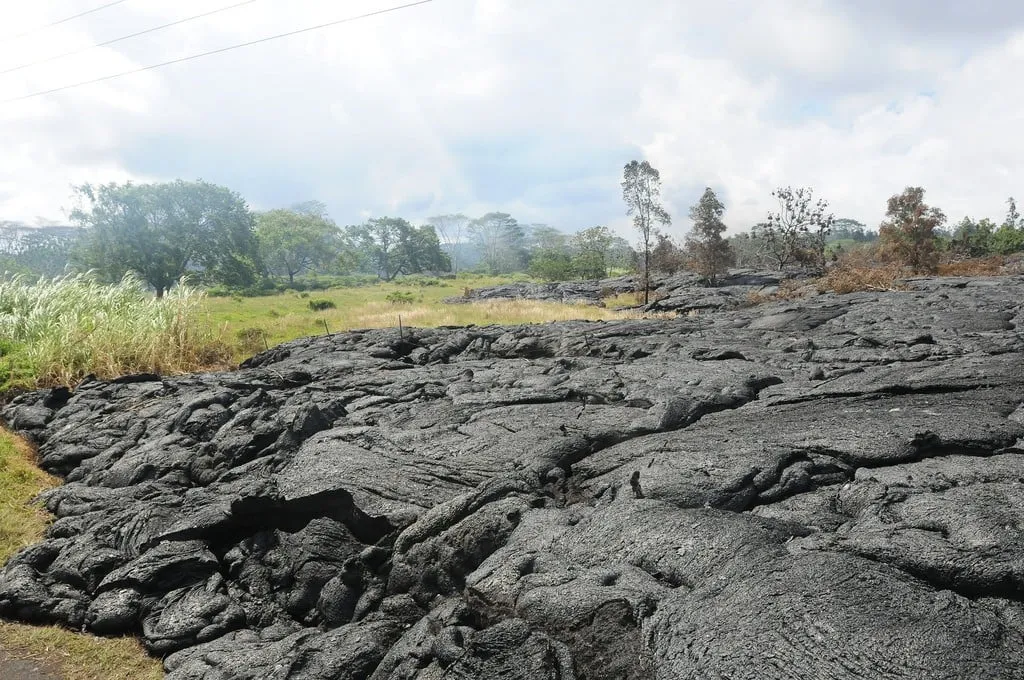 Lava flowing into the ocean on the Puna coast in East Hawaii.
Lava flowing into the ocean on the Puna coast in East Hawaii.
This region is constantly changing due to lava flows from Kilauea. Attractions can appear or disappear, but the raw landscape itself is the draw. Unique features include black sand beaches formed by lava, lava-heated tide pools (check conditions and safety), and views of recent lava flows. Exploring East Hawaii offers a powerful connection to the Earth’s creative and destructive forces, presenting a unique and memorable part of Backpacking Hawaii.
Backpacking Mauna Kea
Mauna Kea is a dormant volcano on the Big Island, renowned not only for its summit observatories but also for being the world’s tallest mountain when measured from its base on the sea floor. Hiking Mauna Kea is a challenging but rewarding experience.
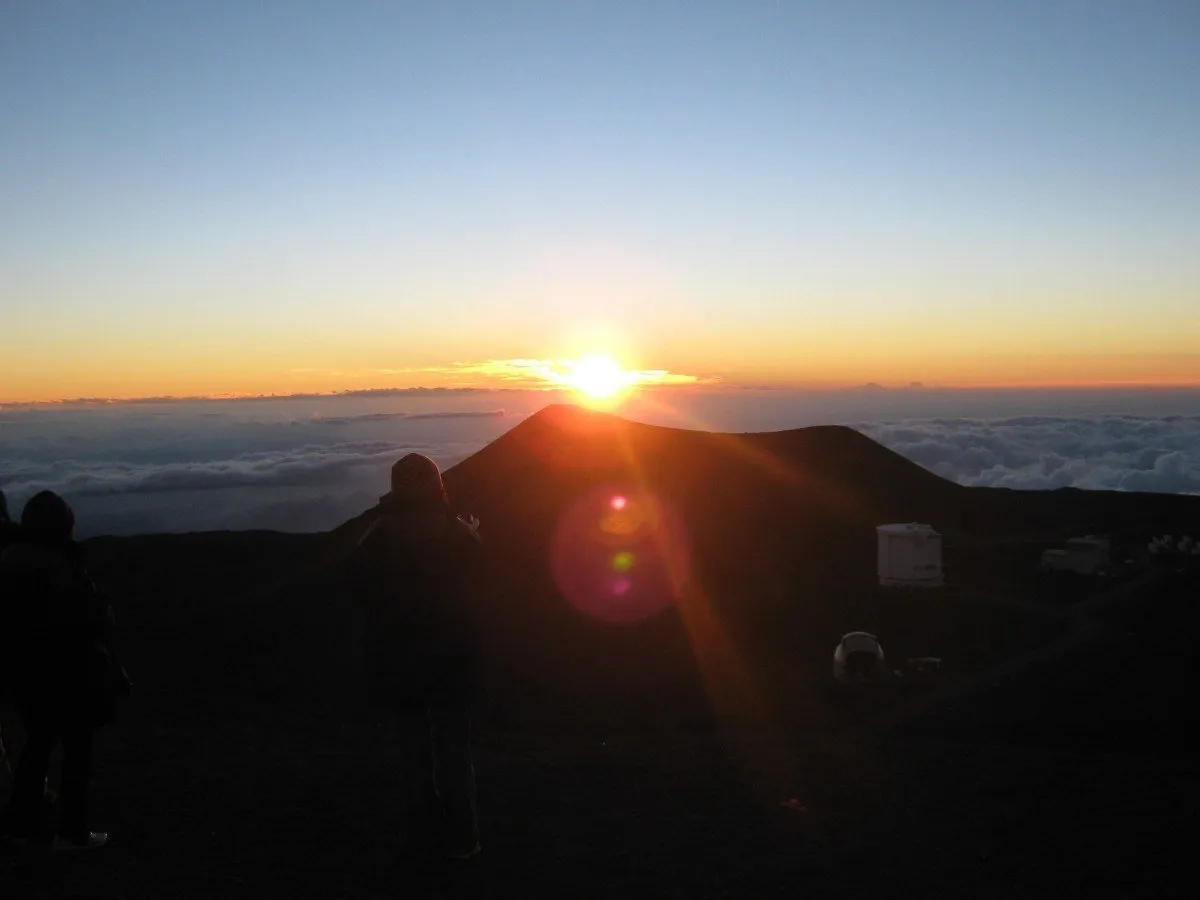 The summit of Mauna Kea on the Big Island during sunset, with observatories visible.
The summit of Mauna Kea on the Big Island during sunset, with observatories visible.
The hike to the summit begins at the Visitor Information Station (VIS) at 9,200 feet. The trail is 6 miles long and climbs steeply to over 13,800 feet. Altitude sickness is a serious risk, requiring acclimatization at the VIS before starting the hike. The views from the summit are spectacular, especially at sunset, offering panoramic vistas above the clouds. Respecting the summit as a sacred Hawaiian site is crucial; hiking to the true geological peak is discouraged. It’s a physically demanding but spiritually rewarding highlight of Backpacking Hawaii.
Getting Off The Beaten Path in Hawaii
While Hawaii’s most famous spots can be crowded, it’s remarkably easy to escape the tourist bubble and find solitude, especially while Backpacking Hawaii. Vast areas of each island remain rural and less visited.
Beyond the main islands covered in this guide, lesser-frequented islands like Molokai and Lanai offer even more opportunities for off-the-beaten-path adventures. These islands receive a fraction of the visitors and provide a deeper dive into local life and untouched nature.
Even on the main islands, seeking out less famous trails, beaches, or small towns can lead to authentic experiences. Hitchhiking in rural areas can be a way to meet locals and see places not on bus routes. Traveling with a tent and researching permitted camping spots allows you to stay in beautiful, secluded natural areas, far from the resorts. Getting off the beaten path requires a bit more effort and preparation, but it unlocks some of the most rewarding experiences during Backpacking Hawaii.
Top Things to Do in Hawaii
No matter which island you choose for your Backpacking Hawaii adventure, certain experiences capture the essence of this unique destination. Here are ten must-do activities:
1. Hike the Napali Coast
Challenge yourself on the Kalalau Trail or a shorter section to witness the breathtaking, rugged cliffs of Kauai’s Napali Coast, a landscape so stunning it feels prehistoric.
 Backpacking Hawaii on the legendary Kalalau Trail along the Napali Coast, Kauai.
Backpacking Hawaii on the legendary Kalalau Trail along the Napali Coast, Kauai.
2. Eat Hawaiian Food
Explore the diverse culinary landscape influenced by Polynesian, Asian, and American traditions. Don’t miss trying local specialties like poke bowls, kalua pig from a luau, laulau, and fresh tropical fruits. Seek out local eateries and food trucks for authentic flavors.
 Plates of traditional Hawaiian BBQ food, including kalua pig and other dishes.
Plates of traditional Hawaiian BBQ food, including kalua pig and other dishes.
3. Experience the Blue Hole/Weeping Wall
For a truly adventurous hike in Kauai, trek to the base of Mount Waialeale’s crater, known as the Blue Hole, to stand before the impressive “Weeping Wall” of waterfalls. Be prepared for wet and challenging conditions.
4. Go Surfing at Least Once
Hawaii is the birthplace of modern surfing. Take a lesson or simply rent a board to experience the thrill of riding a wave, ideally in the gentle waters of Waikiki or a beginner-friendly spot on another island.
5. Climb Mauna Kea, The Big Island
Hike to the summit of Mauna Kea for unparalleled views, especially at sunset. Acclimatize carefully and be aware of the altitude on this challenging ascent to the world’s tallest mountain (measured from the seafloor).
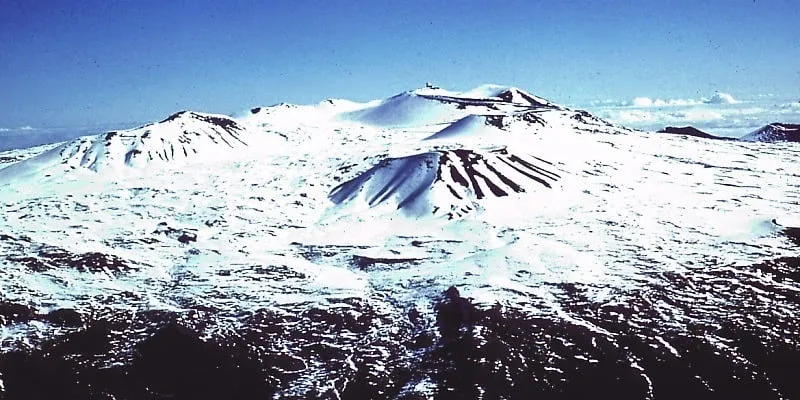 Snow-capped summit of Mauna Kea on the Big Island in winter, with observatories visible.
Snow-capped summit of Mauna Kea on the Big Island in winter, with observatories visible.
6. Drive the Road to Hana
Embark on the iconic scenic drive along Maui’s eastern coast. Take your time to stop at the numerous waterfalls, hiking trails, and coastal viewpoints that make the journey as spectacular as the destination.
7. Go Trekking in Waimea Canyon, Kauai
Hike into the “Grand Canyon of the Pacific” to explore its colorful cliffs, diverse trails, and hidden waterfalls. Views from within the canyon are truly spectacular.
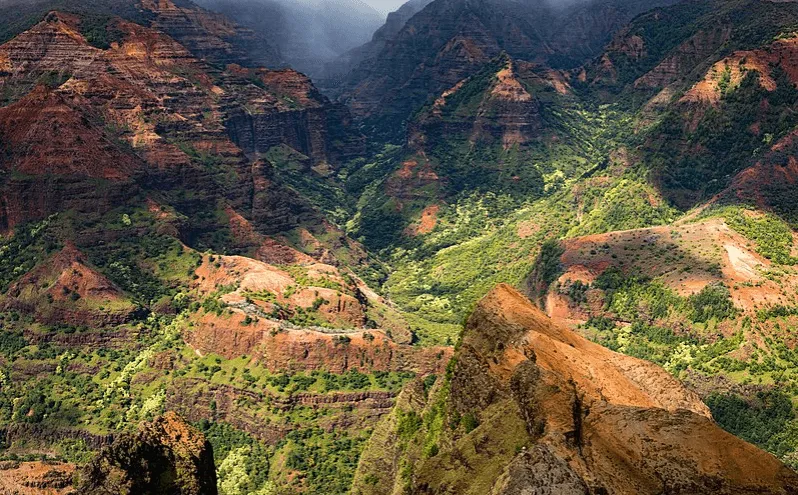 The vast and colorful Waimea Canyon in Kauai, also known as the Grand Canyon of the Pacific.
The vast and colorful Waimea Canyon in Kauai, also known as the Grand Canyon of the Pacific.
8. Watch the Sunrise or Sunset from Mount Haleakala, Maui
Make the trip to the summit of Haleakala for an unforgettable view as the sun rises or sets over the volcanic landscape and the clouds below. Dress warmly, as it’s cold at the top.
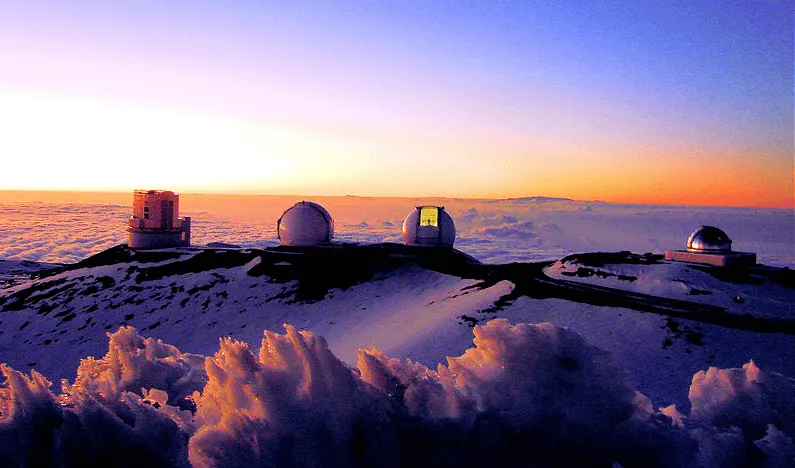 Sunrise view from the summit of Mount Haleakala in Maui, with clouds and observatories.
Sunrise view from the summit of Mount Haleakala in Maui, with clouds and observatories.
9. Go Snorkeling/Scuba Diving
Explore the vibrant underwater world surrounding the islands. Snorkel or dive to see colorful coral reefs, tropical fish, sea turtles, and perhaps even manta rays or sharks in specific locations.
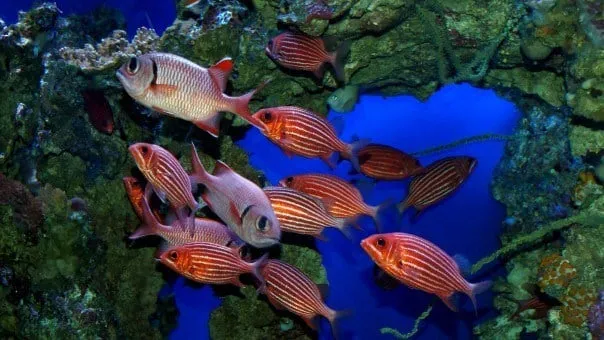 Colorful coral reef with various tropical fish underwater in Hawaii.
Colorful coral reef with various tropical fish underwater in Hawaii.
10. Explore Hawaii Volcanoes National Park
Witness the power of nature at the active Kilauea and Mauna Loa volcanoes on the Big Island. Hike across old lava flows, peer into craters, and see steam vents as the landscape is constantly reshaped.
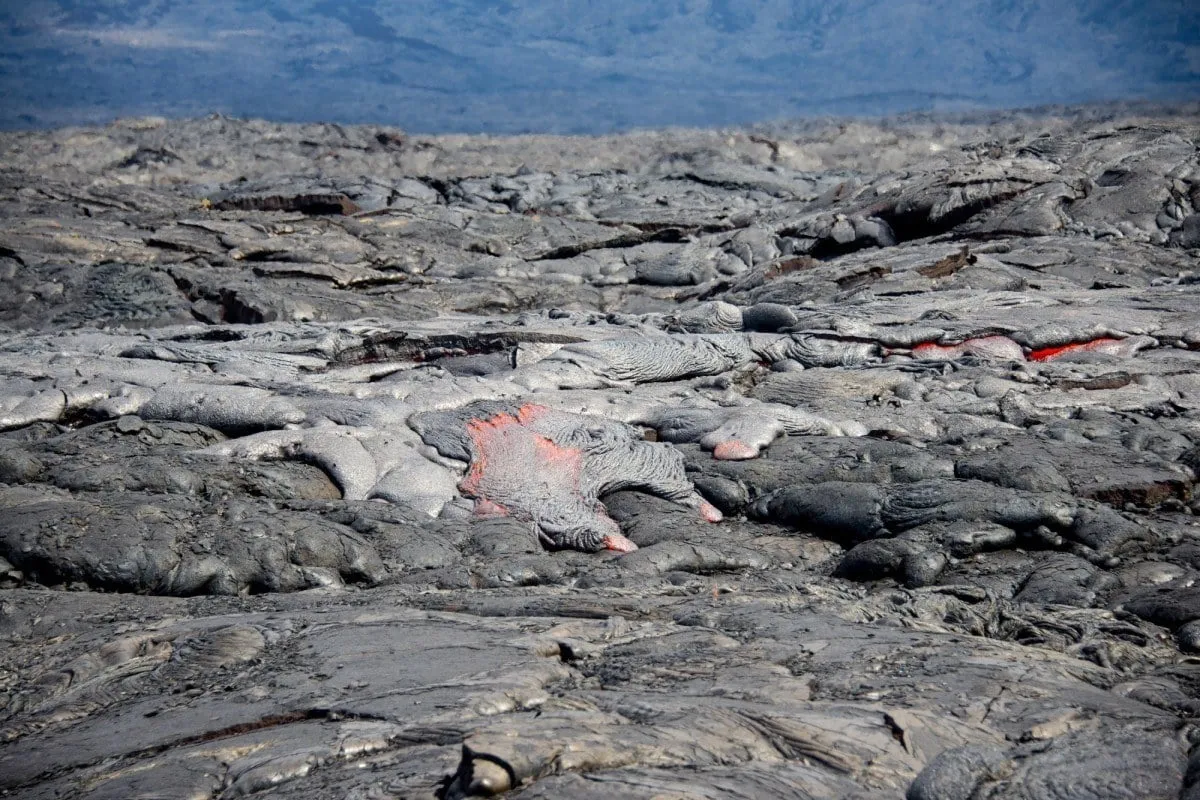 Lava flowing from a volcano across a rugged landscape in Hawaii Volcanoes National Park.
Lava flowing from a volcano across a rugged landscape in Hawaii Volcanoes National Park.
Where to Stay in Hawaii
Accommodation is often the biggest expense when Backpacking Hawaii. Luxury resorts are plentiful, but budget options exist if you know where to look and are willing to be flexible.
Hostels are available in major hubs like Honolulu and certain spots on other islands, offering a social atmosphere and lower prices compared to hotels. Booking in advance is highly recommended, especially during peak season.
Camping is a fantastic way to save money and immerse yourself in nature. However, wild camping is generally not permitted. You’ll need permits for designated campgrounds in state and national parks or county parks. Researching and booking permits ahead of time is crucial. Traveling with a lightweight tent is essential for budget Backpacking Hawaii.
Other options include Couchsurfing, which allows you to connect with locals and gain insider perspectives, or looking for budget-friendly guesthouses and Airbnbs outside the main tourist zones. Renting a campervan can also be a good option, combining transport and accommodation costs, but van rentals in Hawaii can be pricey.
Backpacking Hawaii Budget and Cost
Let’s be upfront: Backpacking Hawaii is not as cheap as Southeast Asia or parts of Central America. The cost of living is high, and nearly everything has to be imported. However, it is entirely possible to travel here on a budget with smart strategies.
A realistic daily budget for a budget backpacker aiming to minimize costs might range from $40-$75 USD per day. This would involve mostly camping, cooking most of your meals, using limited public transport or hitchhiking, and focusing on free activities like hiking and swimming at beaches.
For a more comfortable budget that includes some hostel stays, eating out occasionally, renting a car for parts of the trip, and paying for some tours or activities, a daily budget of $75-$150+ USD is more realistic.
| Expense | Broke Backpacker | Frugal Traveler | Creature of Comfort |
|---|---|---|---|
| Accommodation | $30-$50 | $50-$120 | $120+ |
| Food | $10-$15 | $15-$40 | $40+ |
| Transport | $0-$30 | $30-$50 | $50+ |
| Nightlife | $0-$15 | $15-$40 | $40+ |
| Activities | $0-$30 | $30-$80 | $80+ |
| Total per day: | $40-$140 | $140-$330 | $330+ |
Hawaii Budget Travel Tips
Minimizing costs while Backpacking Hawaii requires conscious effort and planning. Here are key strategies:
- Prioritize Camping: Camping is significantly cheaper than hostels or hotels. Obtain necessary permits and utilize designated campgrounds. This also gets you closer to nature.
- Cook Your Own Food: Eating out, even at casual spots, adds up quickly. Buy groceries from supermarkets (or farmers markets for better value and local flavor) and cook meals at campgrounds or hostels with kitchens. Travel with a portable stove if planning to camp extensively.
- Utilize Free Activities: Hiking, swimming, sunbathing, snorkeling from the beach, watching surfers, exploring local towns, and visiting free cultural sites cost nothing but time and effort. Hawaii’s natural beauty is largely free to access.
- Limit Alcohol Consumption: Alcohol prices, especially at bars and restaurants, are very high. Buying drinks from supermarkets is cheaper, but reducing or eliminating alcohol consumption can save a significant amount of money.
- Consider Hitchhiking: In rural areas, hitchhiking is relatively common and can save on transport costs, although it requires flexibility and patience. Use caution and trust your instincts.
- Travel with a Water Filter Bottle: Save money and reduce plastic waste by filtering your own water from safe sources.
- Travel During Shoulder Season: Prices for flights and accommodation may be lower during the shoulder seasons (spring and fall) compared to peak winter or summer.
Best Time to Visit Hawaii
Hawaii enjoys a pleasant, tropical climate year-round, but there are subtle variations and peak seasons that can impact your Backpacking Hawaii experience and budget.
Generally, the weather is consistently warm. Summer (roughly April to October) is hotter and drier, with average highs in the mid-80s °F (around 30°C). This is also peak season, leading to higher prices and larger crowds. Winter (roughly November to March) is slightly cooler and wetter, with highs in the mid-70s °F (around 25°C).
However, weather can vary dramatically within an island depending on location. The leeward (west and south) sides are typically drier and sunnier, while the windward (east and north) sides receive more rain and are lusher. For example, the Hilo side of the Big Island is famously wet, while the Kona side is dry.
For surfers, winter brings the massive waves to the North Shores of islands like Oahu and Maui. For snorkeling and diving, summer generally offers calmer waters and better visibility.
Considering crowds and cost, the shoulder seasons (April-May and September-October) often offer a good balance of pleasant weather and fewer tourists compared to the peak holidays and summer months.
What to Pack for Hawaii
Packing smart is key for a successful Backpacking Hawaii trip. The islands are tropical, but varied terrain and activities mean you need a mix of gear.
- Backpack: A comfortable backpack suitable for hiking and travel.
- Daypack: A smaller pack for day trips, hikes, and carrying essentials.
- Lightweight Clothing: Swimsuits, shorts, t-shirts, sarong/towel.
- Rain Jacket: Essential, especially if visiting the windward sides or hiking in higher elevations/jungles.
- Hiking Shoes/Boots: Sturdy footwear for trails, from coastal walks to mountain hikes.
- Sandals/Flip-flops: For beach and casual wear.
- Sun Protection: High SPF sunscreen (reef-safe recommended), hat, sunglasses.
- Insect Repellent: Especially important for evenings and in lush/jungle areas.
- Water Filter Bottle: Stay hydrated and reduce plastic waste.
- Snorkel Gear: If you plan to snorkel frequently, bringing your own can save money.
- Quick-Dry Towel: Compact and efficient.
- Headlamp or Small Flashlight: Useful for camping, exploring lava tubes, or early/late activities.
- Basic First-Aid Kit: Including blister treatment.
- Reusable Shopping Bag: For groceries and souvenirs.
- Camera: To capture the stunning landscapes.
Staying Safe in Hawaii
Hawaii is generally a safe destination for travelers, including backpackers. Violent crime rates are low compared to many mainland US areas. However, like any travel destination, it has its safety considerations.
Petty theft, particularly rental car break-ins, is a known issue at popular trailheads, beaches, and viewpoints. Never leave valuables visible in your car.
Natural hazards pose a greater risk. Strong ocean currents and rip tides are common; always swim at lifeguarded beaches and pay attention to warning signs. Hiking trails can be challenging, with steep drops, muddy sections, and rapidly changing weather. Be prepared, stay on marked trails, and inform someone of your plans. Volcanic areas have inherent risks like hot ground, hidden steam vents, and dangerous fumes; follow all park guidelines.
Respecting local culture and customs, particularly around sacred sites and surf spots, is important. While most locals are welcoming, some areas, especially surf breaks, can be territorial. Be mindful and respectful in the water.
Common sense and preparation are your best tools for staying safe while Backpacking Hawaii.
Sex, Drugs, and Rock ‘n’ Roll in Hawaii
Hawaii is not primarily a party destination compared to places like Las Vegas or parts of Mexico. The focus is largely on nature, relaxation, and outdoor activities.
Alcohol is readily available for those 21 and over, but prices are high, especially in tourist areas. There are bars and nightlife options, particularly in Honolulu and popular tourist towns on other islands, but the scene is generally more relaxed than wild.
Marijuana is decriminalized in Hawaii, but recreational use remains illegal. Medical marijuana is legal for registered patients. Other drugs exist, as in any place, but are not a prominent part of the typical backpacker scene.
Overall, if you’re looking for non-stop partying, Hawaii might not be the best fit. It caters more to those seeking natural beauty, adventure, and a chill vibe.
Hawaii Travel Guide to Getting Around
Getting around the Hawaiian islands requires planning, as distances are significant and public transport varies.
Inter-island travel is primarily by air. Hawaiian Airlines and Southwest are the main carriers. Booking flights in advance is crucial for securing reasonable prices.
Once on an island, transport options include:
- Public Bus: Available on the major islands (Oahu has the most extensive system, simply called “TheBus”). Routes are often limited outside urban areas and tourist centers, making it difficult to reach many trailheads or secluded spots. It’s the cheapest option for getting around cities or between specific towns.
- Rental Car: Provides the most flexibility and access to remote areas. However, rentals are expensive, and parking can be difficult and costly in popular spots. Booking well in advance is essential.
- Campervan Rental: Combines transport and accommodation but is a premium option in Hawaii. Offers great freedom if you plan to camp.
- Rideshares (Uber/Lyft): Available in more populated areas but can be expensive, especially for longer distances.
- Hitchhiking: Possible in rural areas, especially on islands like Kauai and the Big Island, but relies on luck and patience. Use with caution.
For truly exploring the islands beyond the main roads and tourist centers, having your own vehicle (rental car or campervan) offers the most freedom and is highly recommended for maximizing your Backpacking Hawaii experience, despite the cost.
Entry Requirements for Hawaii
As a state of the United States, Hawaii’s entry requirements are the same as those for entering the US mainland.
Citizens of many countries are eligible to enter the United States for tourism or business stays of 90 days or less without a visa under the Visa Waiver Program (VWP). This requires having a valid passport from a participating country and obtaining an approved Electronic System for Travel Authorization (ESTA) prior to travel.
If you are not from a VWP country, you will need to apply for a US tourist visa (B-2 visa) well in advance through a US embassy or consulate.
Always check the latest requirements with the official US State Department website or your local US embassy before planning your trip.
Working and Volunteering in Hawaii
Extending your stay and immersing yourself in local life while Backpacking Hawaii can be achieved through working or volunteering. This is also a great way to offset the high cost of travel.
Volunteering platforms connect travelers with hosts offering free accommodation and sometimes food in exchange for a few hours of work per day. Opportunities in Hawaii often involve working on organic farms (WWOOFing is popular here), helping at eco-lodges, or assisting with community projects. This allows you to live simply, connect with local communities, and experience Hawaii from a non-tourist perspective.
Finding paid work as a foreigner on a tourist visa is generally not permitted. If you plan to work legally, you would need the appropriate work visa, which is usually tied to a specific job offer. However, opportunities for digital nomads with remote jobs are increasingly viable, provided you adhere to visa regulations regarding your stay.
Some Unique Experiences in Hawaii
Beyond the standard tourist activities, Hawaii offers unique cultural and natural experiences.
Best Festivals in Hawaii
Experiencing a local festival offers insight into Hawaiian culture and community spirit.
- Merrie Monarch Festival (Big Island, Spring): A prestigious week-long hula competition and festival celebrating Hawaiian culture and history.
- Kona Coffee Cultural Festival (Big Island, November): Celebrates the famous Kona coffee industry with farm tours, tastings, and events.
- Made in Hawaii Festival (Oahu, August): Showcases local products, food, fashion, and crafts.
- Surf Competitions (Oahu/Maui, Winter): Witness world-class surfers at famous breaks like the Banzai Pipeline or Jaws.
- Cultural Festivals: Many smaller festivals throughout the year celebrate specific aspects of Hawaiian and Polynesian culture, music, and art on various islands.
Trekking in Hawaii
Hawaii is a hiker’s paradise, offering trails through vastly different landscapes. Trekking is also one of the most budget-friendly ways to experience the islands’ incredible natural beauty while Backpacking Hawaii.
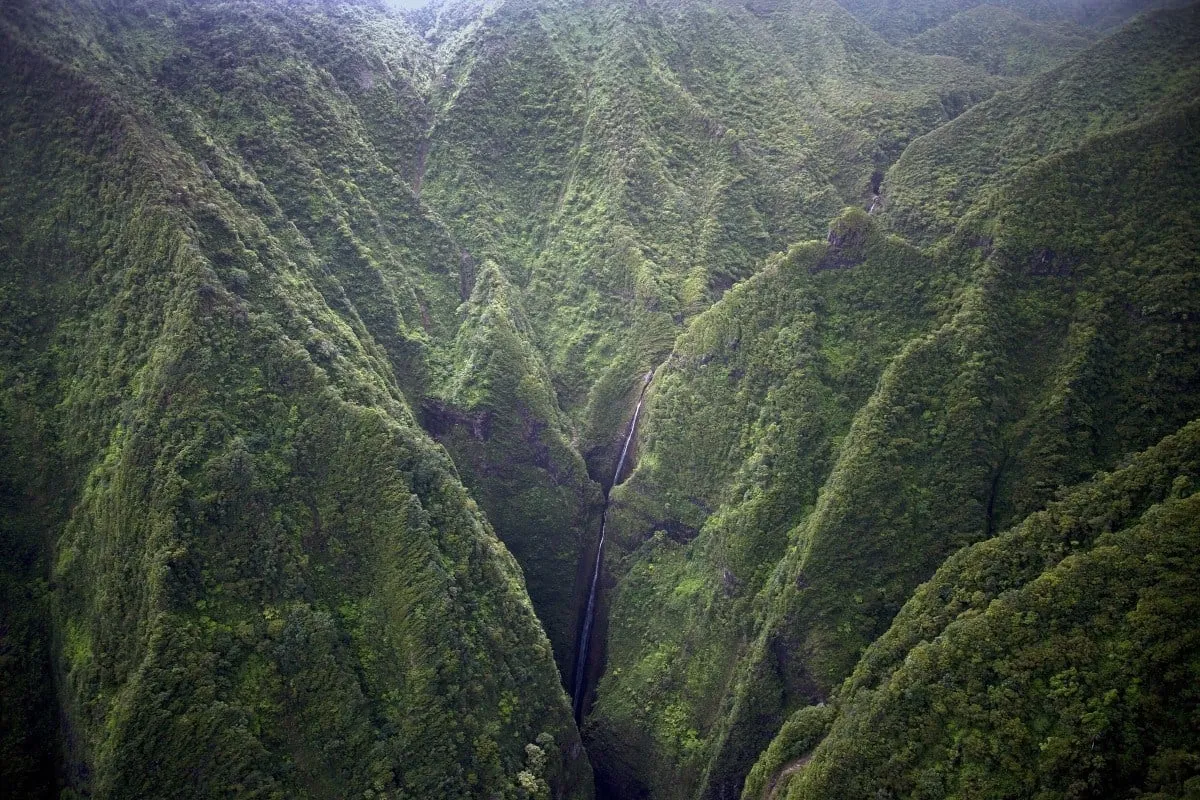 Hikers traversing a trail in a lush mountainous landscape with a waterfall in the background in Hawaii.
Hikers traversing a trail in a lush mountainous landscape with a waterfall in the background in Hawaii.
From challenging mountain ascents and volcanic crater crossings to coastal paths and rainforest explorations, there’s a hike for every fitness level and interest. Many of the most stunning views are only accessible on foot.
Best Hiking Trails in Hawaii
- Kalalau Trail (Kauai): A challenging multi-day hike along the dramatic Napali Coast cliffs.
- Waimea Canyon Trails (Kauai): Trails descending into or along the rim of the “Grand Canyon of the Pacific.”
- Diamond Head Summit Trail (Oahu): A steep but short climb to a historic viewpoint overlooking Waikiki.
- Kilauea Iki Trail (Big Island): A unique hike across a solidified lava lake within Hawaii Volcanoes National Park (check access).
- Mauna Kea Summit Trail (Big Island): A strenuous high-altitude hike to the summit area of the world’s tallest mountain.
- Pipiwai Trail (Maui): Located in the Kipahulu section of Haleakala National Park, this trail goes through a bamboo forest to Waimoku Falls.
Scuba Diving in Hawaii
The waters surrounding Hawaii are teeming with marine life and unique underwater landscapes, making it a prime destination for scuba diving and snorkeling.
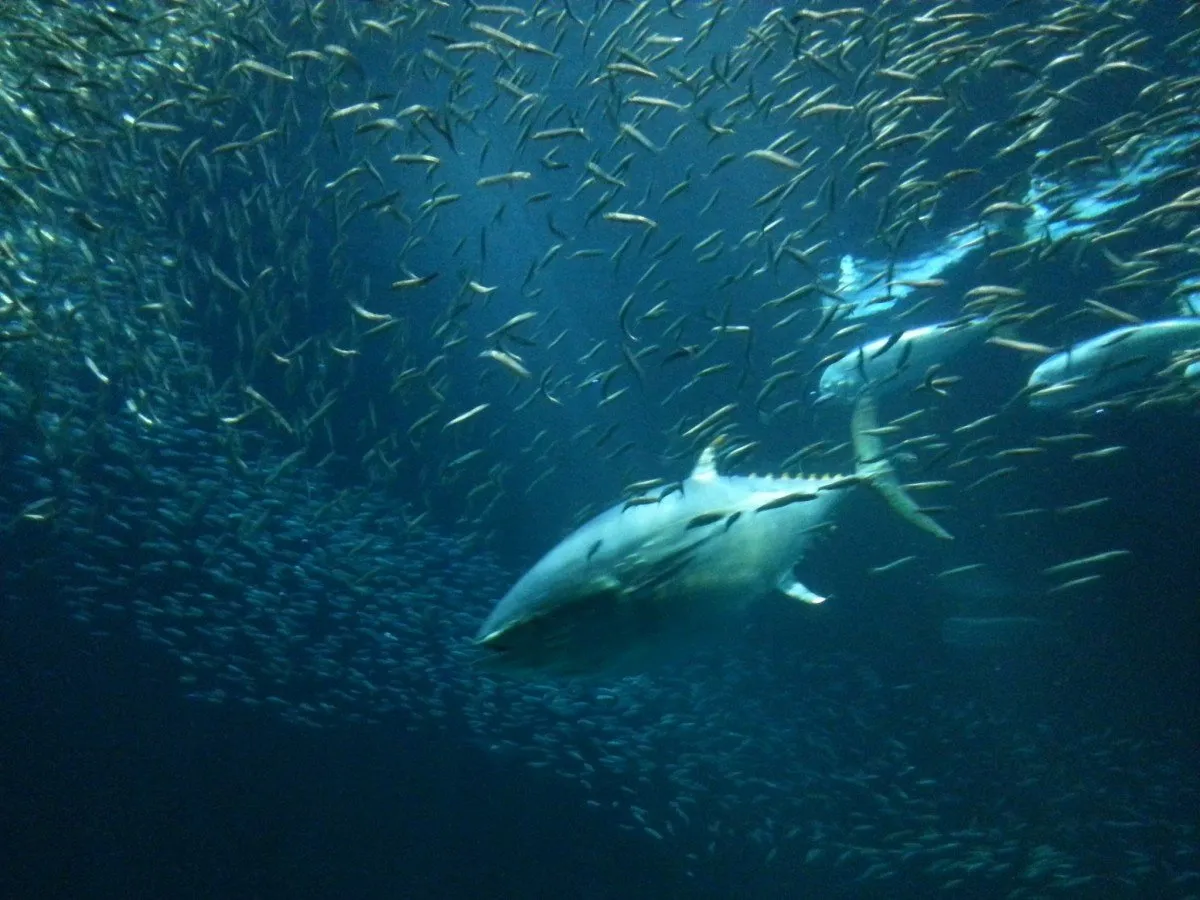 A close-up view of a scuba diver underwater near a coral reef in Hawaii.
A close-up view of a scuba diver underwater near a coral reef in Hawaii.
Dive sites range from vibrant coral reefs and lava tubes to shipwrecks and encounters with large marine animals. Popular diving experiences include night dives with giant manta rays off the Kona coast (Big Island) and exploring underwater lava formations. While scuba diving can be expensive, even snorkeling from the beach offers incredible opportunities to see fish, turtles, and reefs.
Surfing in Hawaii
Surfing is deeply ingrained in Hawaiian culture and history. Whether you’re a seasoned pro or a complete beginner, experiencing the waves is a fundamental part of Backpacking Hawaii.
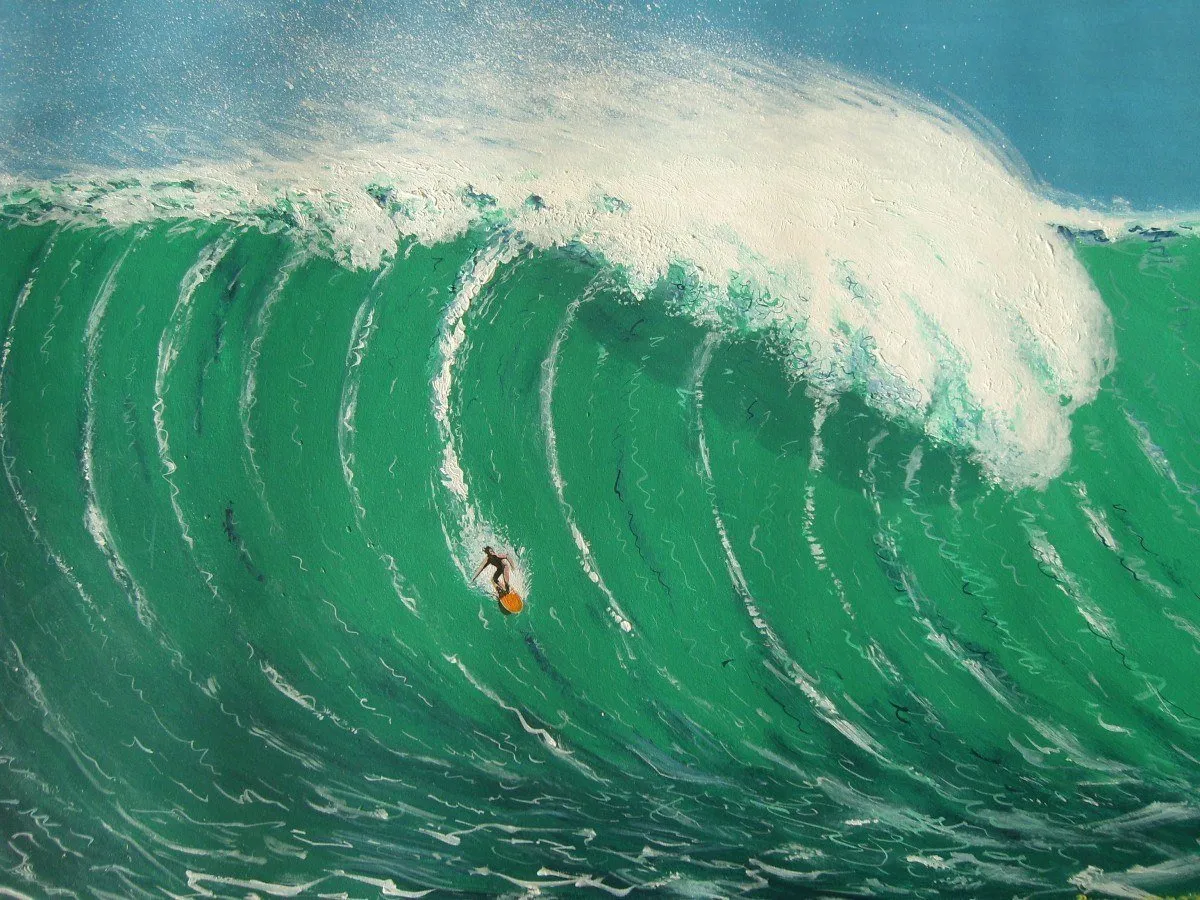 An abstract painting depicting a large wave and surfers.
An abstract painting depicting a large wave and surfers.
The islands offer breaks suitable for all levels, although famous spots like the Banzai Pipeline in winter are strictly for experts. Numerous surf schools on each island offer beginner lessons. Even just watching the incredible talent of local and international surfers is a memorable experience.
Being a Responsible Backpacker in Hawaii
Traveling responsibly is particularly important in a place as ecologically and culturally sensitive as Hawaii. Embrace the principle of malama ‘aina (care for the land).
- Respect the Culture: Hawaii has a rich and complex history. Be respectful of sacred sites (heiau), local customs, and traditions. Learn a few basic Hawaiian phrases.
- Protect the Environment: Use reef-safe sunscreen to protect marine ecosystems. Minimize plastic consumption by using reusable water bottles and bags. Stay on marked trails to prevent erosion and protect fragile ecosystems. Pack out everything you pack in.
- Support Local: Whenever possible, support local businesses, artists, farmers markets, and Native Hawaiian enterprises. Your tourism dollars can make a positive impact when spent consciously.
- Be Mindful of Your Impact: The natural beauty you came to see depends on responsible visitor behavior. Don’t disturb wildlife, take only photographs, and leave places better than you found them.
By being a mindful and respectful traveler, you contribute to preserving the natural beauty and cultural heritage of Hawaii for future generations, ensuring that Backpacking Hawaii remains a sustainable and enriching experience.
Hawaii Travel Guide FAQs
Here are some common questions about visiting Hawaii:
Is Hawaii expensive?
Yes, Hawaii is generally considered an expensive destination, especially compared to many traditional backpacking locations. However, it’s possible to travel on a budget by utilizing strategies like camping, cooking your own food, and focusing on free activities.
Where should I go in Hawaii for the first time?
For a first-time backpacker interested in a mix of popular sights and natural beauty, Oahu or Maui are often recommended. If prioritizing raw nature and volcanic landscapes, the Big Island is a great choice. Kauai is ideal for those primarily focused on hiking and lush scenery.
What is the best beach in Hawaii?
Defining the “best” beach is subjective, as Hawaii offers everything from white sand to black and green sand beaches. Popular favorites include Waikiki Beach (Oahu), Hapuna Beach (Big Island), Ka’anapali Beach (Maui), and Poipu Beach (Kauai). Each offers a different experience.
Is Hawaii safe?
Hawaii is generally very safe, particularly concerning violent crime. The main safety concerns for backpackers relate to natural hazards (currents, hiking risks) and petty theft (car break-ins). Practicing common sense and respecting nature significantly enhances safety.
What food is Hawaii famous for?
Key Hawaiian dishes and foods to try include poke (raw fish salad), kalua pig (slow-cooked pork, often found at luaus), laulau (pork and fish steamed in taro leaves), poi (taro paste), and shave ice. Fresh seafood and tropical fruits are also abundant.
Final Thoughts on Backpacking Hawaii
Backpacking Hawaii is an adventure that transcends typical tropical getaways. It’s an opportunity to connect with a place of profound natural power, rich cultural history, and vibrant living traditions. While the “broke” part of backpacking here presents unique challenges compared to cheaper regions, the rewards are immense.
From hiking volcanic landscapes that feel like another planet to catching your first wave in the birthplace of surfing, diving into teeming underwater worlds, or simply relaxing on a secluded beach, Hawaii offers experiences that stay with you. By embracing budget strategies, respecting the land and culture, and seeking out authentic interactions, your Backpacking Hawaii journey will be more than just a trip – it will be an immersion into the unique spirit of Aloha. Pack your bags, embrace the adventure, and prepare for an unforgettable exploration of this incredible archipelago.
